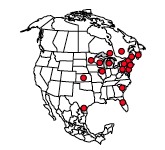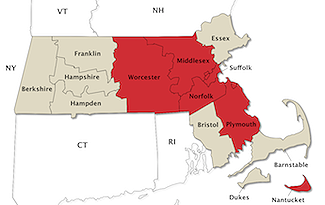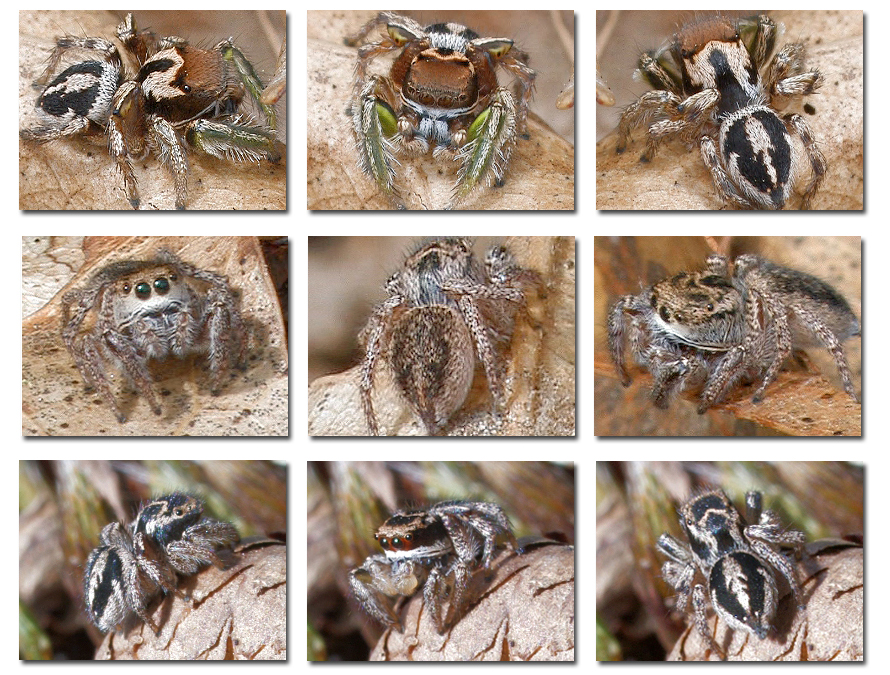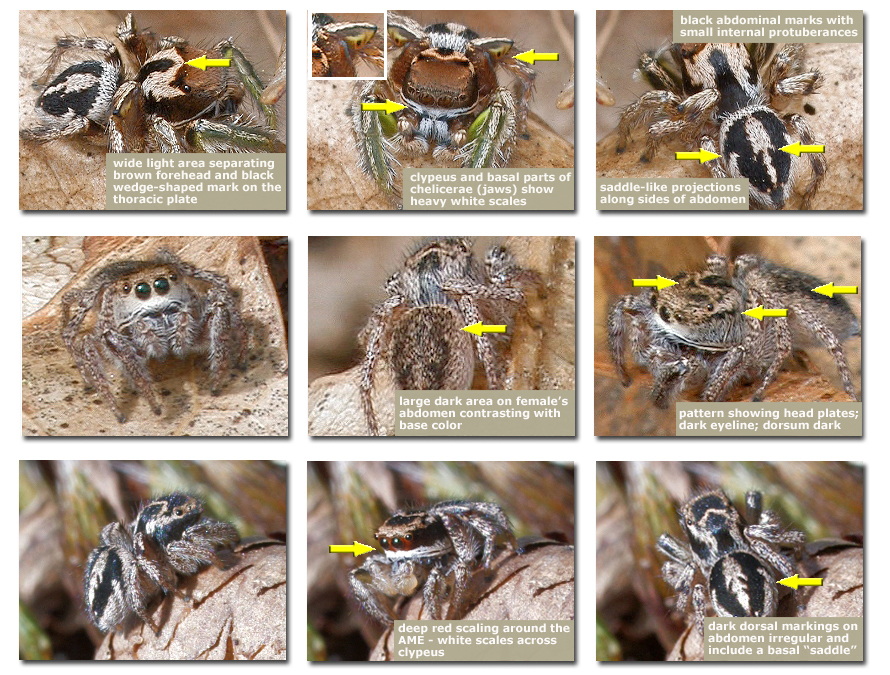Habronattus viridipes (Hentz, 1846)

Richman, Cutler& Hill 2012
In the Northeast this is one of the first jumping spiders active in spring. The immature “red-faced” males can be seen on warm days in late March while the mating displays of the adults occur in the later part of April and into May. In contrast to watching birds, whose behavior is often obscured by dense foliage, observing jumping spiders (once located!) will often provide a front row seat. Finding a female that is being courted by local males is particularly interesting. The mating “arena” is typically as small as a single leaf or rock. Courting males and females often seem undisturbed by an observer– as was the case with the Habronattus viridipes pair shown here. In this case the male’s heroic advances are rejected. Ultimately the successful males are those judged to have “the right stuff” by the discerning females.
Massachusetts – First State / County Records

- ♦ J. H. Emerton – Habrocestum peregrinum – Suffolk (Hyde Park) – Emerton, 1891: 246, pl. 20, f. 6
- ♦ J. H. Emerton – Pellenes viridipes – Norfolk (Sharon) – Emerton, 1909: 228, pl. 12, f. 5
- ♦ T. Murray – H. viridipes – Worcester (Lancaster), April 2006 – BugGuide node 46615
- ♦ T. Murray – H. v. – Plymouth (Plymouth), May 2006 – BugGuide node 53108
- ♦ D. Walton – H. v. – Middlesex (Concord), May 2009 – BugGuide node 274545
- ♦ D. Walton – H. v. – Dukes (Nantucket), September 2010 – Species Data: www.rkwalton.com/jsdata.php
-
♦ Connecticut – H. v. – Kaston, 1948: 465
Extremely common all over the state.
- Griswold, C. E. 1987. A revision of the jumping spider genus Habronattus F.O.P. Cambridge (Araneae; Salticidae), with phenetic and cladistic analyses. University of California Publications, Entomology 107:1-344.



